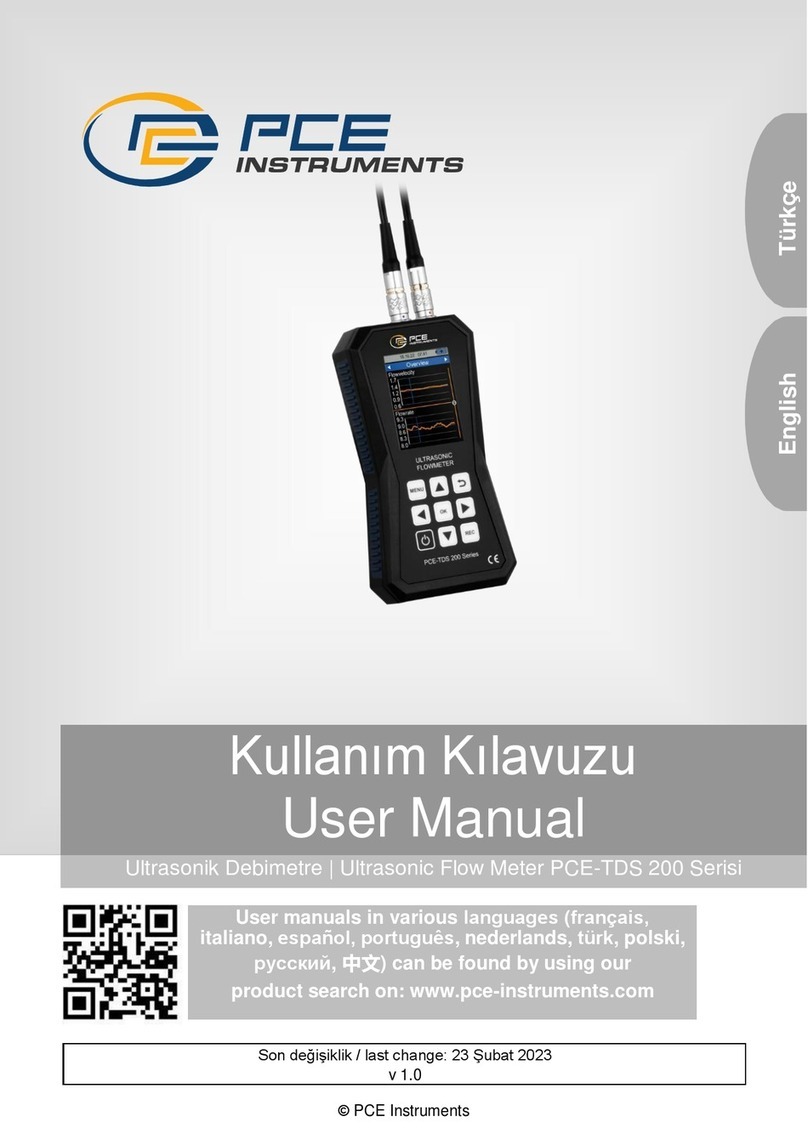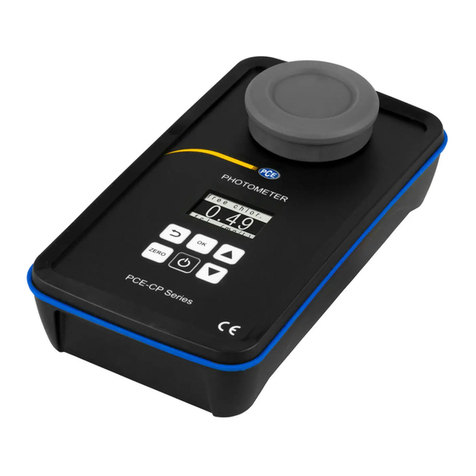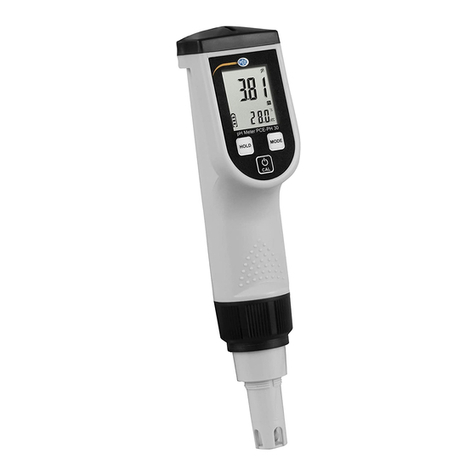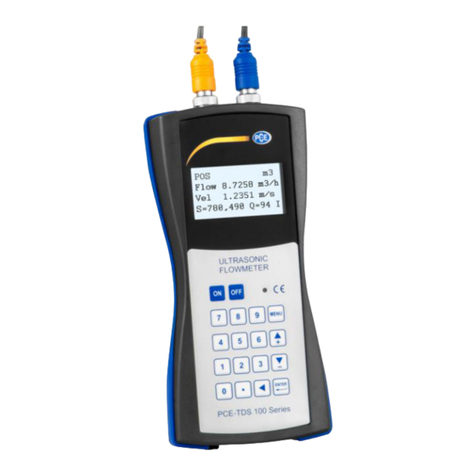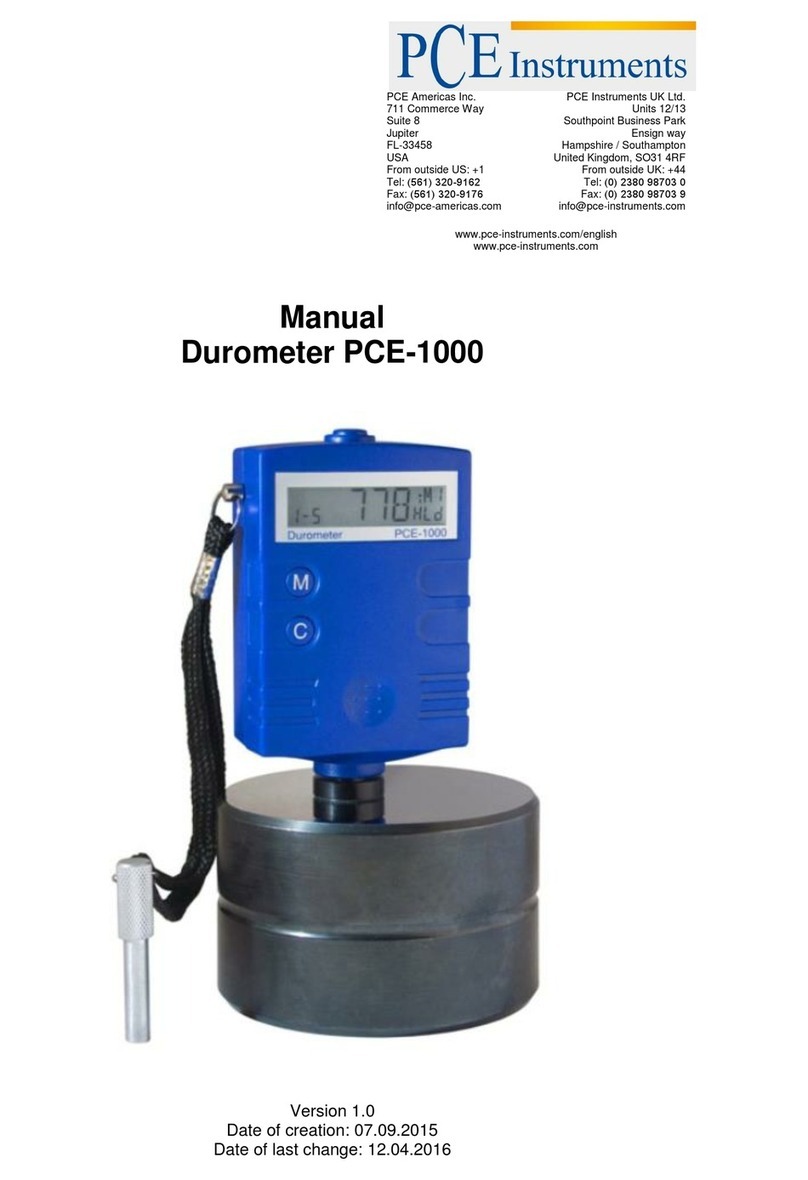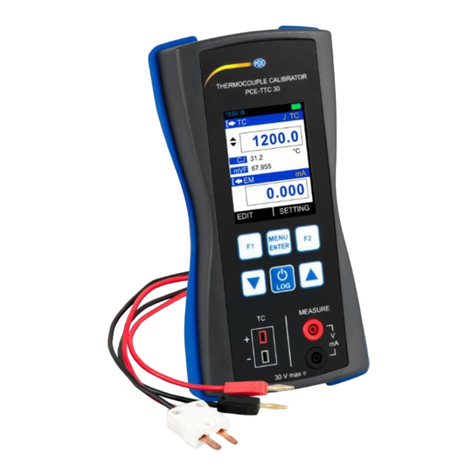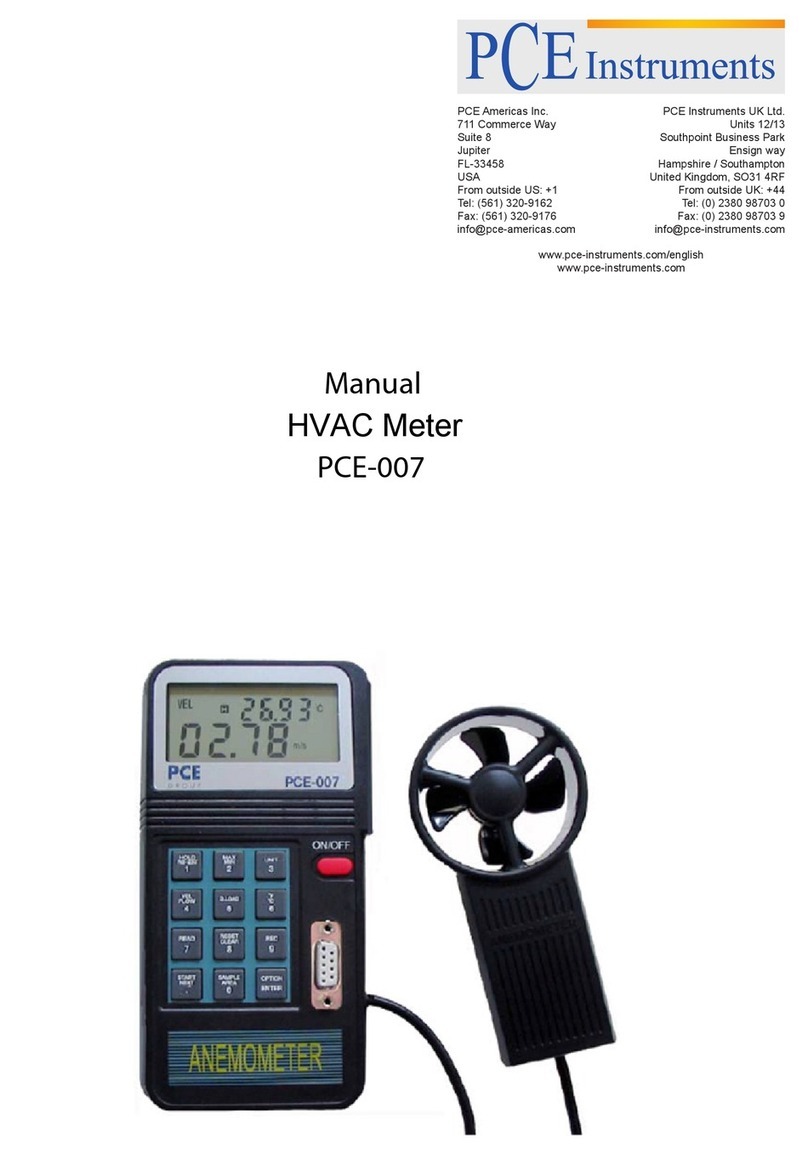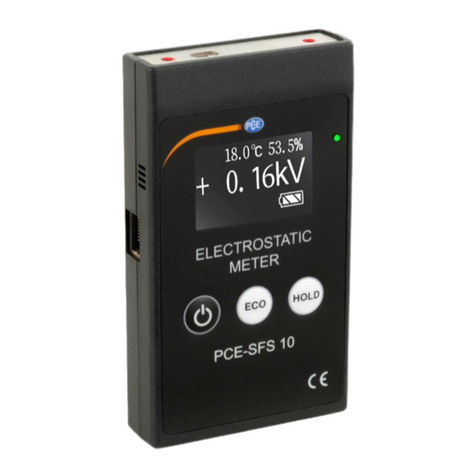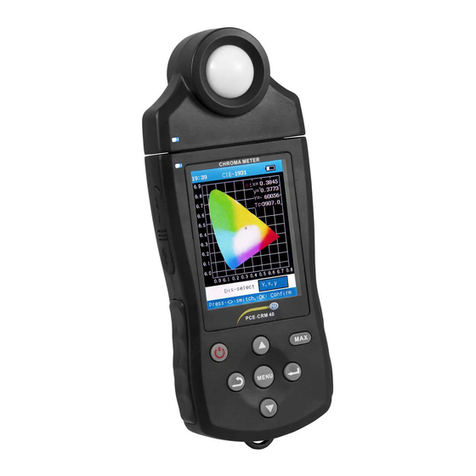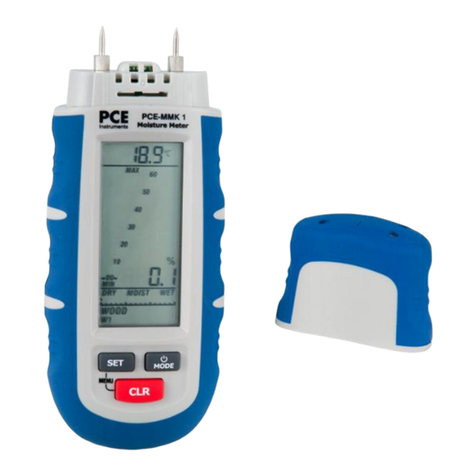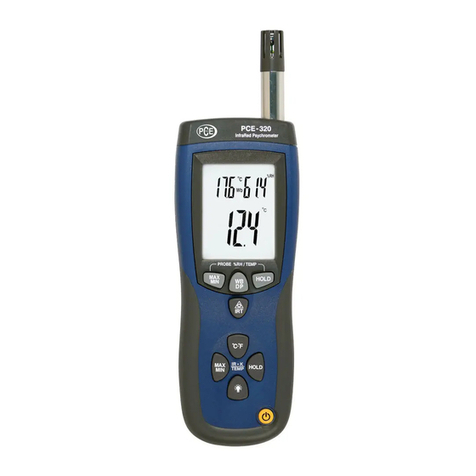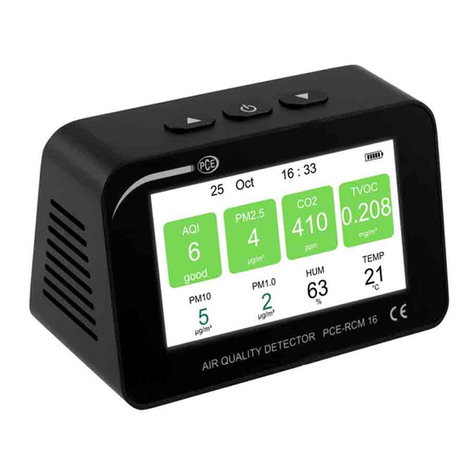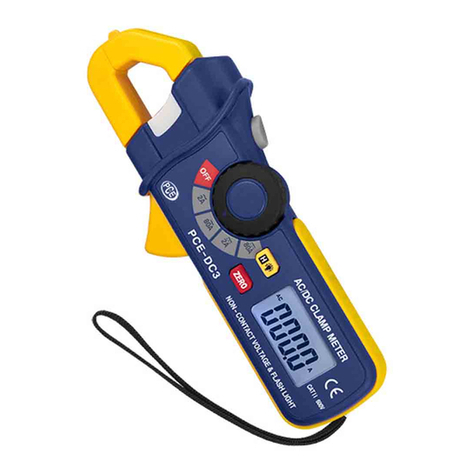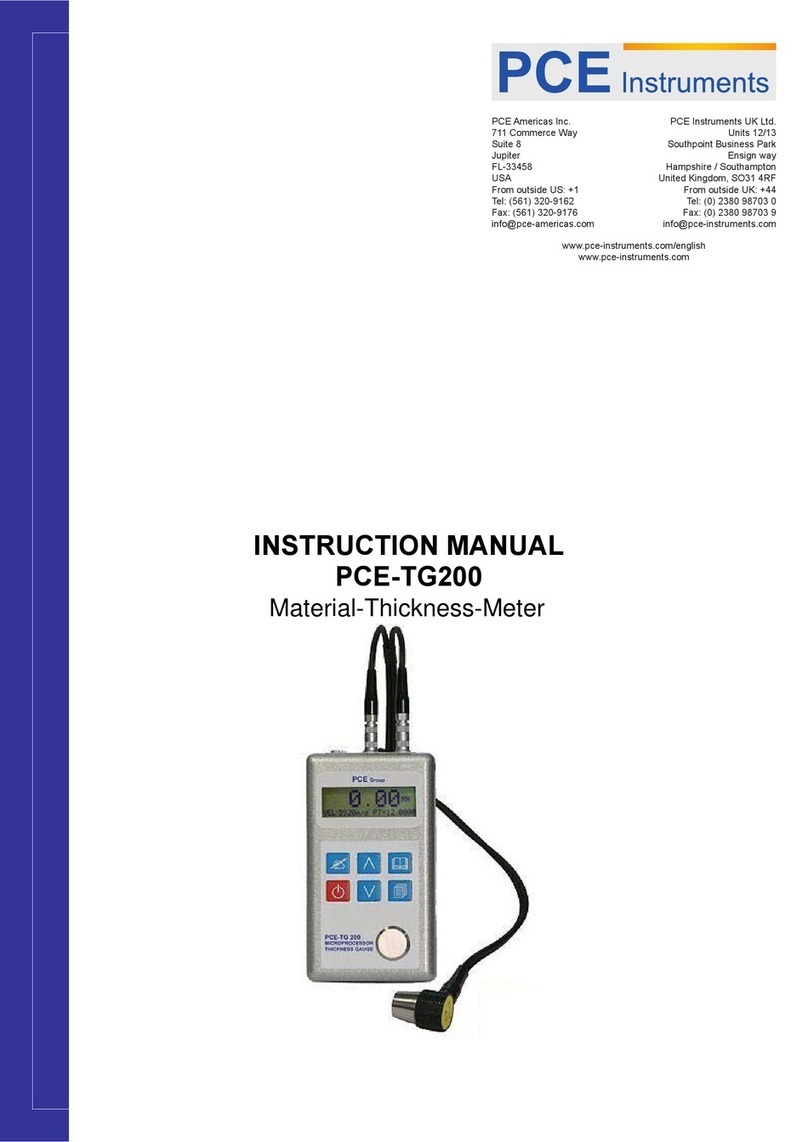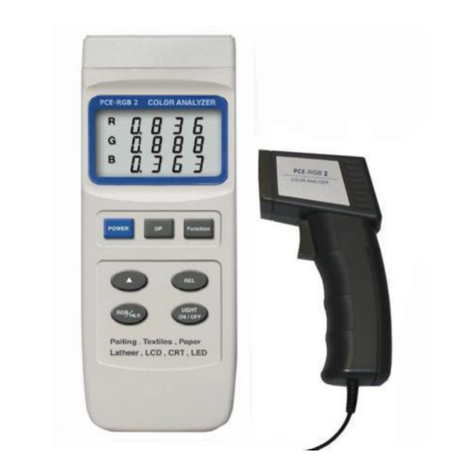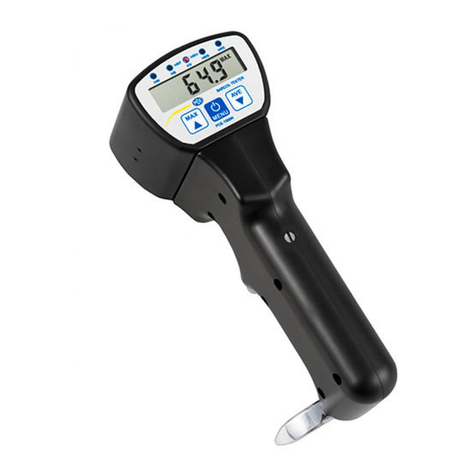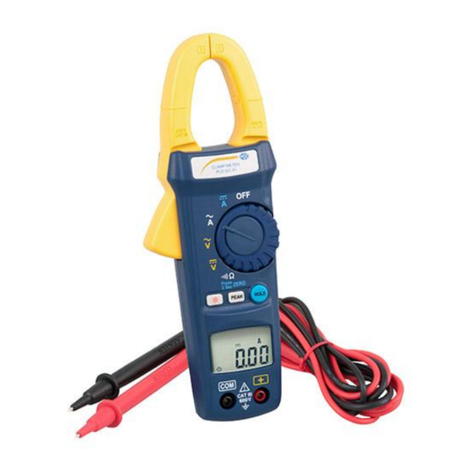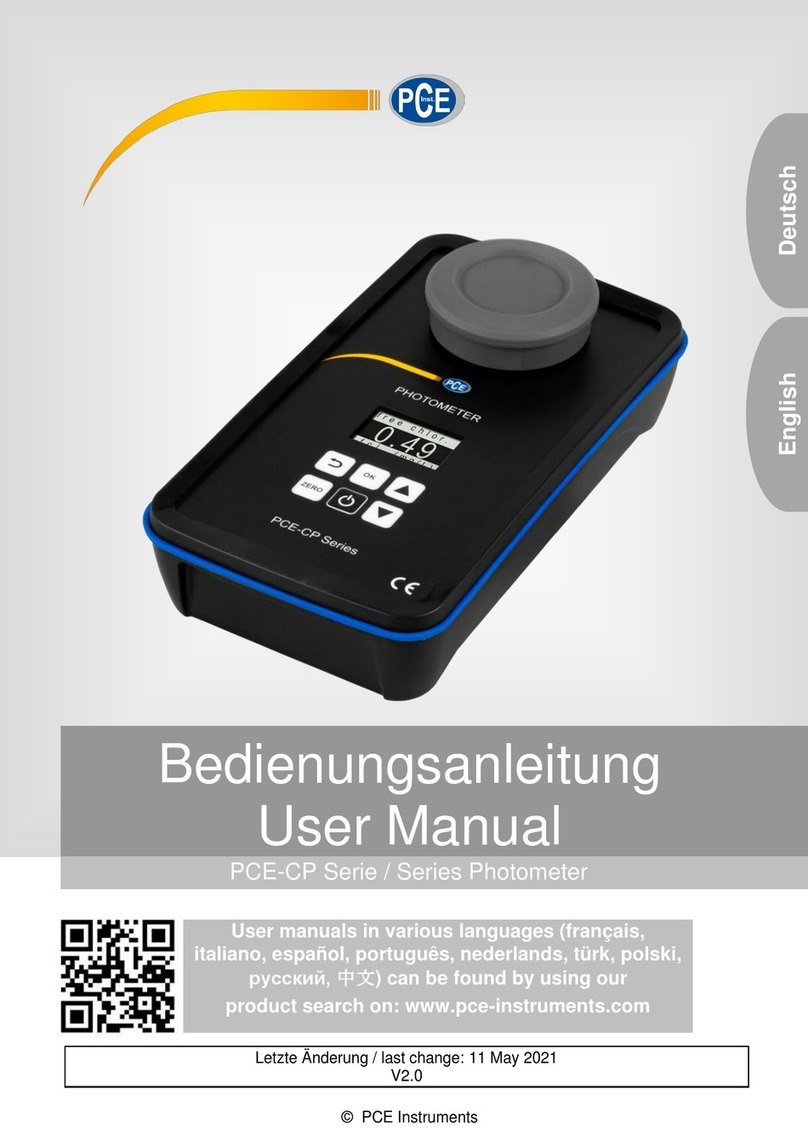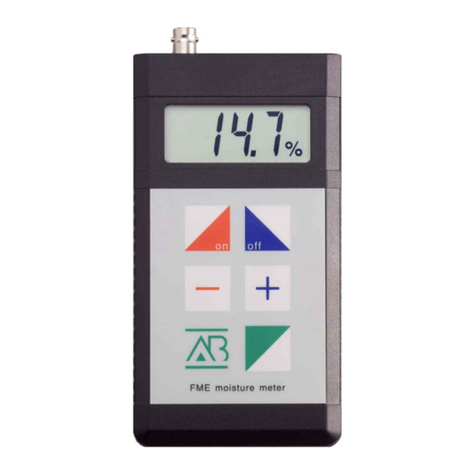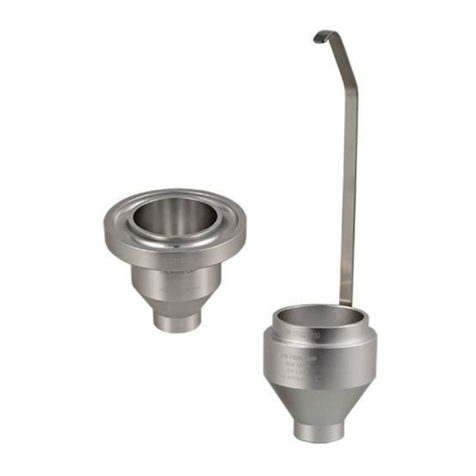
User Manual
Pressure gauge PCE-DMM 20, PCE-DMM 21,
PCE-DMM 50, PCE-DMM 51
1.1 Information on the operating manual
This operating manual contains important information on
proper usage of the device. Read this operating manual
carefully before installing and starting up the pressure
measuring device.
Adhere to the safety notes and operating instructions which
are given in the operating manual. Additionally applicable
regulations regarding occupational safety, accident
prevention as well as national installation standards and
engineering rules must be complied with!
This operating manual is part of the device and must be
kept at a, for the personnel always accessible location,
close to the installation position of the device.
This operating manual is copyrighted. The contents of this
operating manual reflect the version available at the time of
printing. It has been issued to our best knowledge and
belief. However, errors may have occurred. For incorrect
statements and their consequences, liability cannot be
assumed by PCE Instruments.
–Technical modifications reserved –
1.2 Symbols used
DANGER! –Dangerous situation, which may result in
serious or fatal injuries
WARNING! –Potentially dangerous situation, which
may result in fatal or serious injuries
CAUTION! –Potentially dangerous situation, which
may result in minor injuries
!CAUTION! –Potentially dangerous situation, which
may result in damage of objects
NOTE –Tips and information for the user to ensure
good conditions for the operation.
1.3 Target group
WARNING! To avoid hazards for the operator and
damages of the device, following described instructions
have to be worked out by qualified technical personnel.
1.4 Limitation of liability
No liability is assumed and warranty claims are excluded in
case of non-observance of the operating manual, improper
application, modification of or damage to the device.
1.5 Intended use
- The battery powered digital pressure gauge has been
exclusively designed for applications in hydraulics and
pneumatics as well as for mechanical engineering. It
can be easily and quickly installed in situ.
- It is in the responsibility of the user to verify whether the
chosen device is suitable for the intended application.
In case of any doubts, contact our technical department
to eliminate any indistinctness. PCE Instruments does
not assume any liability for an incorrect selection and
its consequences!
WARNING! –Danger through improper usage!
1.6 Package contents
Please verify that all listed parts are undamaged included in
the delivery and check for consistency specified in your
order:
- digital pressure gauge
- mounting instructions
3. Mechanical installation
3.1 Mounting and safety instructions
WARNING! Install the device only when depressurized
and currentless!
WARNING! This device may only be installed by
qualified technical personnel who has read and
understood the operating manual!
!Handle this electronic precision measuring device
carefully in packed as well as in unpacked condition!
!The device must not be subject to any changes or
modifications.
!The device may not be thrown!
!To avoid damaging the diaphragm, remove packaging
and protective cap only directly before starting up the
device. A delivered protective cap must be stored!
!Place the protective cap on the pressure port again
immediately after disassembling.
!Handle the unprotected diaphragm very carefully - it is
very sensitive and may be easily damaged.
!Do not use any force when installing the device to
prevent damage of the device and the plant!
!The display and the plastic housing are equipped with
rotational limiters. Please do only rotate the display or
the housing within the limit.
Take note that no inadmissibly high mechanical
stresses occur at the pressure port as a result of the
installation, since this may cause a shifting of the
characteristic curve or the demage.
In hydraulic systems, position the device in such a way
that the pressure port points upward (venting).
Provide a cooling line when using the device in steam
lines.
3.2 General installation steps
- Carefully remove the pressure measuring device from
the package and dispose of the package properly.
- Then go ahead as detailed in the specific instructions
below.
3.3 Installation steps for DIN 3852
DO NOT USE ANY ADDITIONAL SEALING MATERI-
ALS, LIKE YARN, HEMP OR TEFLON TAPE!
- Check to ensure the proper groove fitting of the o-ring
and additionally to ensure no damage to the o-ring.
- Ensure that the sealing surface of the taking part is
perfectly smooth and clean. (RZ3.2)
- Screw the device into the corresponding thread by
hand.
- If you have a device with a knurled ring, the transmitter
has to be screwed in by hand only.
- Devices with a spanner flat have to be fully tightened
with an open-end Devices with a spanner flat have to
be tightened with an open-end wrench (G1/4": approx.
5 Nm; G1/2": approx. 10 Nm; G3/4": approx. 15 Nm;
G1": approx. 20 Nm; G1 1/2": approx. 25 Nm).
-The indicated tightening torques must not be ex-
ceeded!
3.4 Installation steps for EN 837
- Use a suitable seal, corresponding to the medium and
the pressure input (e. g. a cooper gasket).
- Ensure that the sealing surface of the taking part is
perfectly smooth and clean. (RZ6.3)
- Screw the device into the corresponding thread by
hand.
- Tighten it with a wrench (for G1/4": approx. 20 Nm; for
G1/2": approx. 50 Nm).
-The indicated tightening torques must not be ex-
ceeded!
3.5 Installation steps for NPT
- Use a suitable seal (e. g. a PTFE-strip).
- Screw the device into the corresponding thread by
hand.
- Tighten it with a wrench (for 1/4" NPT: approx. 30 Nm;
for 1/2" NPT: approx. 70 Nm).
-The indicated tightening torques must not be ex-
ceeded!
3.6 Installation steps for dairy pipe
- Check to ensure that the O-ring fits properly into the
intended groove in the mounting part.
- Center the dairy pipe connection in the counterpart.
- Screw the cup nut onto the mounting part.
- Then tighten it with a hook wrench.
3.7 Installation steps for Clamp and Varivent
- Use a suitable seal corresponding to the medium and
the pressure input.
- Put the seal onto the corresponding mounting part.
- Center the Clamp or Variventconnection on the fitting
counterpart with seal.
- Then fit the device with a suitable fastening element (e.
g. semi-ring or retractable ring clamp) according to the
supplier’s instructions.
3.8 Installation steps for connecting flanges
- Use a suitable seal corresponding to the medium and
pressure input. (e. g. a fiber gasket).
- Put the seal between connecting flange and counter
flange.
- Install the device with 4 resp. 8 screws (depending on
flange version) on the counter flange.
3.9 Positioning of the display module
The display module of the pressure gauge is rotatable so
that clear readability is guaranteed even on unusual
installation positions.
4. Supply / changing the batteries
The digital pressure gauge is supplied by two 3.6 V-lithium-
batteries (Type 1/2 AA). Stored values/parameters are also
kept after changing the batteries.
If the symbol for low batteries is indicated in the display, it is
necessary to replace them as soon as possible with two
new ones of the same type in order to ensure a good
readability of the values. This has only to be done in
switched-off condition.
The battery case is located under the black, circular plastic
cap on the top of the housing.
To change the batteries go ahead
as follows:turn the plastic cap 45°
anti clockwise by a coin
(e. g. 2 € coin) as far as possible
- hold the count tight and lever
the plastic cap out of the
housing with help of the
count
- take the cap off and change
the batteries
- lock the device after that
properly
!An incorrect usage may cause a leak out of batteries
and so a damage the device!
!Never combine batteries of different types or old with
new ones.
!Make sure that the batteries are connected correctly
with the corresponding contacts in the battery tray.
!Never try to charge batteries, demount them, or short-
circuit them.
!Keep the batteries away from heat and unshielded
flame.
!use only batteries with UL certification
5. Initial start-up
WARNING! Before start-up, the user has to check for
proper installation and for any visible defects.
WARNING! The device can be started and operated by
authorized personnel only, who have read and under-
stood the operating manual!
WARNING! The device has to be used within the
technical specifications, only (compare the data in the
data sheet)!
6. Placing out of service
WARNING! When dismantling the device, it must
always be done in the depressurized and currentless
condition! Check also if the medium has to be drained
off before dismantling!
WARNING! Depending on the medium, it may cause
danger for the user. Comply therefore with adequate
precautions for purification.
plastic cap above
battery case
PCE Americas Inc.
711 Commerce Way
Suite 8
Jupiter
FL-33458
USA
From outside US: +1
Tel: (561) 320-9162
Fax: (561) 320-9176
www.pce-instruments.com/english
www.pce-instruments.com
PCE Instruments UK Ltd.
Unit 11
Southpoint Business Park
Ensign way
Hampshire / Southampton
United Kingdom, SO31 4RF
From outside UK: +44
Tel: (0) 2380 98703 0
Fax: (0) 2380 98703 9
